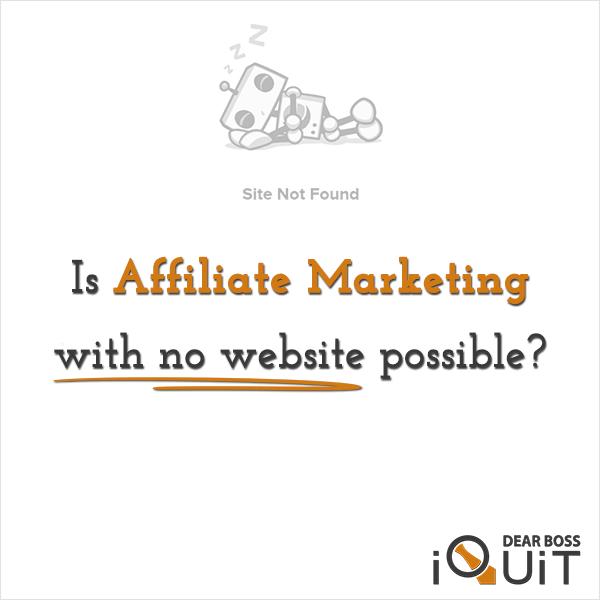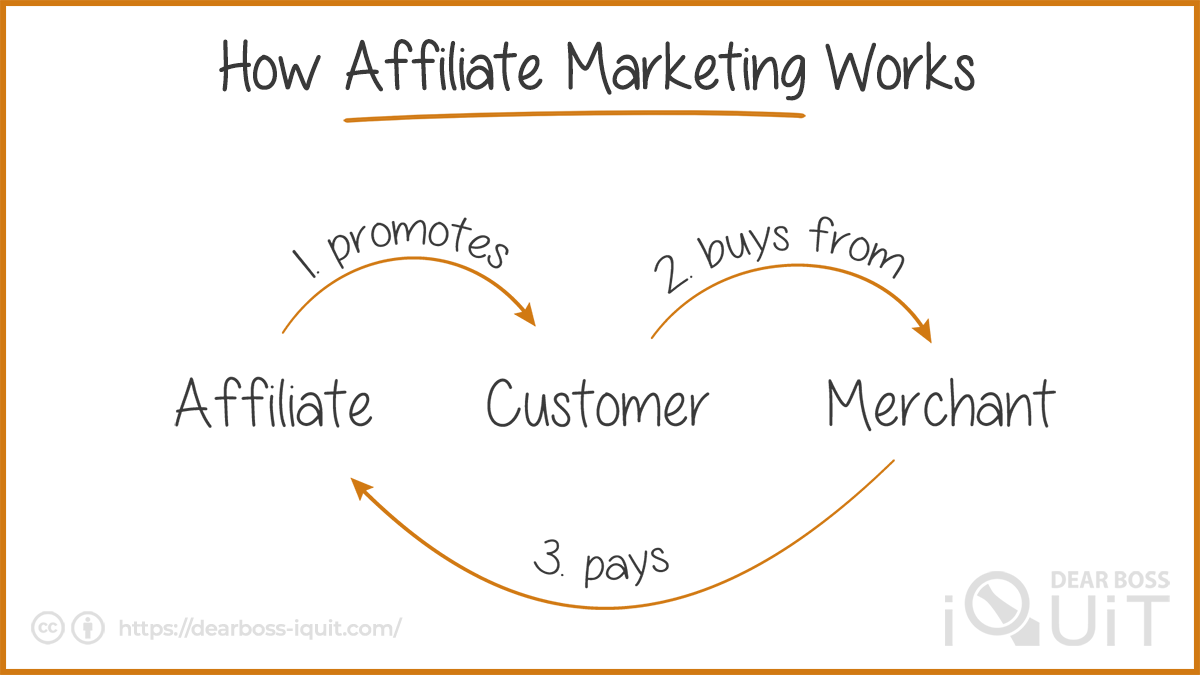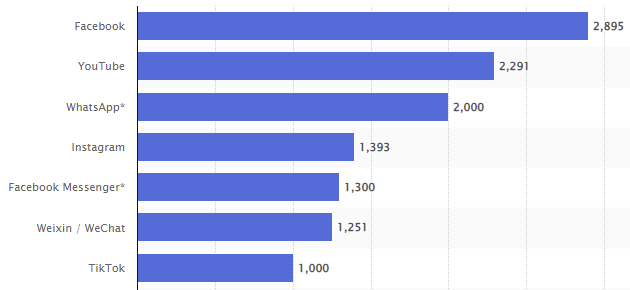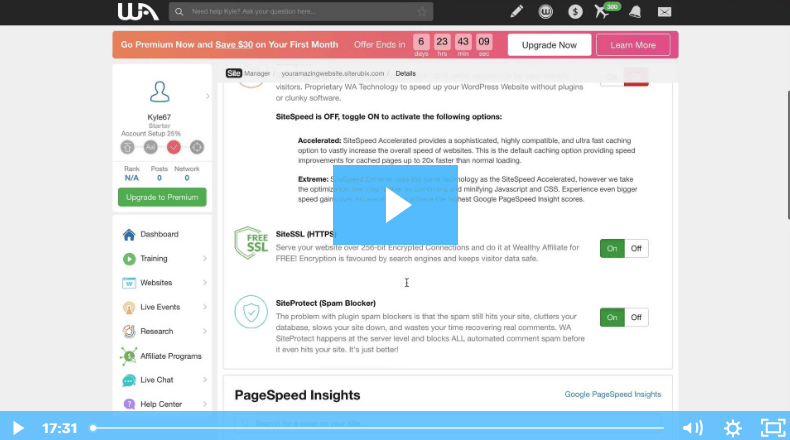Most people get terrified at the idea of building a website.
Who can blame them, right?
After all, getting a website up and running involves either spending countless hours writing computer code yourself or investing thousands of dollars in hiring a web developer to do it for you.
Or is it?
Truthfully, no!
Thanks to the latest advancements in content management systems (CMS) and web page building technologies (e.g., WordPress, Wix, Joomla, etc.), creating a fully-functional affiliate website isn’t nearly as complicated and costly as it used to be a decade ago.
Still, setting up and utilizing even such user-centered newbie-friendly tools can be extremely challenging to many individuals, especially those who lack tech-savviness.
If you’re one of those people, trying to figure out whether it’s possible to do affiliate marketing without a website is totally understandable.
As such, in an attempt to point you in the best possible direction, this article is geared towards sharing with you whether building a profitable affiliate business with no website is possible, plus eight methods to accomplish it.
Without further ado, let’s dive straight into it.
Can I Do Affiliate Marketing With No Website?
Yes, making money with affiliate marketing is possible even without a website.
Affiliate marketing is the process of earning commissions for referring paying customers to third-party online merchants.
Your primary objective as an affiliate marketer is to establish and maintain communication with web users who might be interested in the affiliate products you promote until you’ve convinced them that purchasing them is in their best interest.
One of the best methods to achieve that is by leveraging a website. However, it’s not the only option.
How to Do Affiliate Marketing With No Website
Over the years, millions of people have managed to build profitable affiliate businesses by leveraging dozens of different digital marketing channels that don’t even remotely resemble the workings of a website, such as:
- Social Media
- Solo Ads
- Pay Per Click (PPC)
- YouTube Channel
- Content Publishing Platforms
- Online Communities
- Email Marketing
- Free eBook
Let’s take a more detailed look at each marketing channel individually.
1. Social Media
Having a website isn’t necessary to succeed in affiliate marketing, but having an online presence is.
Enter social media.
Social media is utilized as a primary affiliate marketing channel almost as much as websites.
That’s because social media platforms are being used by 57.6% of Earth’s entire population every single day, they’re free to join, and they enable marketers to seamlessly interact with their target audience and convert leads into paying customers via dedicated, branded pages.
The five most commonly used social media platforms among affiliate marketers are:
- TikTok
Picking the right social media platform for your affiliate endeavors boils down to 2 main factors:
- Your target audience. The social media platforms you leverage towards conducting your affiliate promotions should correspond to the ones your target audience spends most of their time on. For instance, most Gen Z prefers browsing through Instagram, and TikTok, while millennials and baby boomers mostly hang out on Facebook.
- The affiliate products you market. Some types of affiliate products perform much better if promoted on specific social media platforms. For example, platforms that support long written copy like Facebook and LinkedIn are excellent for promoting B2B products and services. On the other hand, Instagram and Pinterest are better for promoting visually appealing B2C offers such as food, travel, clothes, cosmetics, and pastries.
Once you’ve determined which social media platform(s) you’re going to be focusing your time and attention on, it’s time to start reaching out to your target audience by consistently publishing content optimally 1-3 times per day.
The more content you create, the higher your chances of acquiring a broader and more diverse spectrum of potential buyers.
Every piece of content you publish throughout your social media accounts should be valuable and relevant to your chosen niche. Producing such content will boost your conversion rates by assuring your audience that you’re a trustworthy expert who can answer their questions, address their concerns, and help them solve their problems.
On the other hand, distributing irrelevant and worthless content will not only hurt your credibility and reputation but drive most potential customers away. The same goes for overly promotional content. It might sound counterintuitive, but the more you push to make a sale at every chance you get, the fewer sales you’ll be making.
If you’re after doing affiliate marketing without building a website, leveraging the power of social media is absolutely worth considering.
2. Solo Ads
Solo ads are yet another solid method of promoting affiliate links without a website.
Simply put, solo ads are single-product, email-based paid affiliate promotions sent to the subscribers of an email list owned and maintained by a third-party marketer or company, preferably in your niche.
Promotions conducted via solo ads can be very effective in generating affiliate sales because they’re being delivered directly by your target email lists’ owners, who have, ideally, already created a strong and trustworthy relationship with their subscribers.
The main downside of solo ads is that you could end up wasting hundreds of dollars on inferior traffic purchased from vendors with poor-quality, low-converting email lists built by employing shady tactics, such as:
- Purchasing subs from other marketers
- Using email scraping software
- Leveraging bot-filled lists
- Gathering niche-irrelevant subs
- & more
One of the best ways to ensure that the traffic you receive via your solo ad campaigns isn’t just depleting your resources for nothing is to always purchase all your solo ads from nowhere but reputable providers like:
- Udimi
- TrafficForMe
- SoloAdsX
- SmarterSoloAds
- & EasySoloAds
Nevertheless, if you’re a beginner to affiliate marketing, I’d advise you to steer clear of solo ads until you’re experienced enough to carefully analyze and assess which email lists are worth investing in and which not.
3. Pay Per Click (PPC)
Ιf you’re after making money with affiliate marketing without a website, integrating PPC in your overall strategy is a must.
Pay-per-click is an online advertising model in which marketers place ads on dedicated advertising platforms in exchange for a fee per each time the ads get clicked by an end-user.
Some of the best platforms you could leverage towards getting your affiliate offers in front of potential buyers on a pay-per-click basis include, but aren’t limited to:
- Google Adwords
- Bing
- YouTube
- & more
Utilizing pay-per-click is one of the fastest ways to ensure that you’ll start getting the right eyes on the affiliate offers you promote as fast as possible.
However, running paid ads involves a significant monetary investment that doesn’t guarantee the return of any profit as the traffic you pay for might not generate any actual affiliate sales.
Typically, newbies to affiliate marketing tend to experience major financial losses equivalent to hundreds, or maybe, even thousands of dollars, until they’ve gathered enough user feedback to understand how to piece together their first profitable PPC campaign.
If the reason you’re trying to avoid launching an affiliate website is due to a lack of funds, I’d strongly suggest that you don’t even bother with running PPC ads because they’ll set you back way more than just hiring someone to develop a simple website from scratch for you.
4. YouTube Channel
YouTube is considered one of the best channels to be used instead of an affiliate website.
First and foremost, YouTube is the second most populated social network after Facebook and the second most used search engine after Google, with 2.3 billion active users globally.
Secondly, YouTube is extremely popular across all current generations, from baby boomers to Gen Z.
Moreover, video content, in general, has been proven to deliver higher audience engagement and customer conversion rates in both B2C and B2B affiliate promotions.
Furthermore, affiliate YouTubers have the option to enhance their revenue by monetizing all or part of their video content via YouTube ads.
On top of all that, YouTube is completely free to join and use.
Getting started with affiliate marketing on YouTube is pretty straightforward.
First, head over to YouTube, click your profile picture at the top right corner, and then select create a channel. Once your channel is live, start consistently publishing niche-relevant videos.
For example, The Tech Chap YouTube channel that targets the tech gadgets niche focuses on publishing YouTube videos that revolve around nothing but subjects relevant to tech gadgets, such as:
- Laptop reviews
- Smartphone unboxings
- Product comparisons
- Purchasing guides
- Device tips & hidden features
- & more
Lastly, place the affiliate links that point to the products you’re promoting in the description below each video. Occasionally, some marketers might even incorporate affiliate links to their video production gear such as cameras, microphones, light, software, etc.
Contrary to popular belief, building a decent income as an affiliate YouTuber doesn’t involve having millions of viewers. For instance, if you’re promoting an affiliate offer that pays a $50 commission per sale and converts at an average rate of 1%, you can be earning $10,000 per month with as few as 20,000 monthly viewers.
5. Content Publishing Platforms
Content publishing platforms are third-party blogs that allow you to leverage their existing infrastructure towards writing, publishing, and distributing affiliate-oriented content online without having to invest time and money in constructing a website of your own.
A few of the most well-known and widely used content publishing platforms include, but aren’t limited to:
- Medium
- Blogger
- LinkedIn Articles
- & Ezine Articles
The primary advantage of utilizing such sites is that most of them come with massive loyal audiences. For example, Medium receives 85 – 100 million active readers per month.
If you manage to get just a fraction of such a large number of users interested in reading your content, trusting in your expertise, and purchasing some of the affiliate products you promote, you’re gold (literally).
The downside of building your affiliate business on a content publishing website is that it’ll be bound to its particular terms and conditions.
For instance, for now, Medium allows content that contains affiliate links as long as you make an appropriate affiliate disclosure statement. However, if someday Medium decides to prohibit affiliate links just like Facebook did a while back, all the affiliate revenue generated through it will vanish overnight.
6. Online Communities
One of the most straightforward approaches to start making affiliate sales as fast as possible with no website is sharing your affiliate links throughout online communities, such as:
- Forums (e.g., Reddit)
- Social media groups (e.g., Facebook)
- Q&A platforms (e.g., Quora)
- Real-time chat apps (e.g., Discord)
- etc
Begin by locating communities that consist of people who’ll be the most likely to be interested in purchasing the affiliate products you endorse. For instance, if you promote computer gaming equipment, it’d behoove you to focus all your efforts on communities of avid gamers.
Making affiliate promotions on communities that revolve around unrelated topics will result not just in generating no sales whatsoever but also in receiving permanent bans.
Once you’ve found a community that seems to suit your affiliate niche, check its user guidelines to determine whether, how, and where it allows the placement of affiliate links. For example, some communities might prohibit the usage of more than one affiliate link per post, while others permit affiliate links only on post signatures.
Lastly, invest time and effort in gaining the trust of the community by actively interacting with its members, sharing valuable insights, answering questions, and solving problems.
Do NOT start randomly spamming your affiliate links everywhere before ensuring that the community perceives you as a credible figure.
Community users and admins hate desperate affiliate spammers who care about nothing but making a quick sale or two, so if they identify you as one, they’ll consider you as a threat that should be avoided, reported, heavily moderated, and ultimately banned.
7. Email Marketing
Despite its relatively old origins, email is still the most efficient marketing channel for promoting affiliate links.
According to Statista, the number of global email users in 2020 amounted to four billion, that is, more than half of Earth’s entire population.
Also, a study conducted by Litmus revealed that email marketing drives an average 3600% ROI (Return on Investment), hundreds of times larger than the ROI delivered by any other form of marketing, digital or otherwise.
The first step to generating affiliate commissions via email marketing is signing up for an email marketing platform, like:
- ConvertKit
- MailChimp
- SendinBlue
- MailerLite
- & GetResponse
Such platforms grant access to all the necessary resources to launch, maintain, and optimize your email marketing campaigns – from squeeze pages builders and lead capturing forms to automated email sequences and mass email blasts.
Most of them are rather pricey so if you’d like to get started cost-effectively, consider MailerLite. It’s completely free to join and use.
After enrolling in an email marketing platform, it’s time to create an automated email sequence, that is, a series of combined promotional and non-promotional emails distributed to your email list’s subscribers at predetermined intervals.
Next, start building an email list by either gathering subscribers yourself or buying some from a third-party marketer.
If you follow the latter course of action, you’re likely to end up wasting a lot of money on niche-irrelevant subscribers, bots, and unnurtured leads who’ll unsubscribe from your list the moment they receive your first email.
On the contrary, if you decide to gather email subscribers manually, you’ll have to put together a squeeze page and a lead magnet.
A squeeze page is a standalone page designed to collect the email addresses of those who land on it via a lead capture form.
A lead magnet is a valuable resource (e.g., ebook, template, discount, case study, free trial, etc.) that you’ll be giving away as an incentive to anyone who submits their email address to your lead capture form.
Here’s an example of a squeeze page offering a free trial as a lead magnet.
Almost every single email marketing platform comes with tools and templates that would enable you to easily create squeeze pages and lead magnets from scratch within minutes.
Once everything’s in place, start marketing your squeeze page via one or more of all the other marketing channels I’ve outlined throughout this article (e.g., social media, PPC, etc.)
8. Free eBook
Another simple and efficient method of promoting affiliate links without a website is writing and publishing an eBook.
Begin by zeroing in on a non-fictional, specific, evergreen subject, optimally one that excites you and in which you already possess significant expertise.
Conduct in-depth research, come up with original ideas, construct a unique approach to the topic at hand and start piecing everything together into an eBook that would provide tons of helpful information to anyone who reads it.
In the meantime, make sure to strategically incorporate affiliate links throughout your eBook’s content where and when appropriate.
If your eBook delivers enough value and you’ve placed your affiliate promotions properly, your readers will be much more likely to trust your suggestions, click on your affiliate links, and ultimately purchase whatever you’re promoting.
On the contrary, an eBook with poor-quality useless content solely geared towards promoting affiliate offers is going to acquire a lot of negative feedback, damage your reputation, diminish your conversion rates, and ultimately yield zero return on your investment.
Lastly, start giving away your eBook for free via:
- Social media
- Paid ads
- Online forums
- Amazon Kindle
- Email marketing
- YouTube
- etc
Don’t bother selling it. Since the size of your affiliate revenue depends almost exclusively on the number of affiliate sales you make, you need to get as many eyes on your affiliate links as possible.
If the eBook ends up acquiring a broad appeal and a lot of positive feedback, you could experiment with selling it for a few bucks down the road.
Drawbacks of Affiliate Marketing With No Website
Up to this point, we’ve established that making money with affiliate marketing without launching a website is possible by leveraging various alternative marketing channels.
However, since I’ve been in the affiliate industry much longer than you, I feel obligated to warn you that venturing into affiliate marketing with no website comes with multiple disadvantages that are nearly impossible to ignore, such as:
1. Limited Control
If you do affiliate marketing on a third-party platform (e.g., social media, forums, content publishing platforms, etc.), you’ll need to keep all your affiliate activities compliant with its particular rules at all times. If the rules change, your operations will have to be adjusted accordingly.
On the contrary, an affiliate website you own will grant you unlimited freedom to call all the shots and run your business by your own rules.
2. Less Credibility
According to a study conducted by SurveyMonkey, 26% of consumers don’t trust brands that don’t have a website. That’s because, over the years, most internet users have been conditioned to perceive businesses that lack a website as unprofessional and untrustworthy.
Can you blame them?
A company that couldn’t care less about investing just a couple of hundred dollars in putting together a website is unlikely to give a sh*t about its customers.
Frankly, I can totally relate. The last time I bought something from a company with no website was over 15 years ago.
Having said all that, if you’re set on doing affiliate marketing without a website, you should prepare yourself for losing tons of potential customers to any competitor who appears more credible just because they possess one and you don’t.
3. Affiliate Program Rejections
The vast majority of sought-after, high-paying affiliate programs out there aren’t willing to form partnerships with affiliate marketers that don’t have a website. The few that currently do eventually won’t.
A few years down the road, being accepted into an affiliate program without a website could be nearly impossible.
If you’d like to ensure that you won’t end up being rejected by most, if not all, affiliate programs you apply for, you’ll need to consider launching an affiliate website.
4. Affiliate Link Prohibitions
Affiliate link promotions are prohibited by numerous marketing channels unless they’re placed on a website or landing page.
For example, Google Adwords and Facebook Ads have policies that forbid running advertisements directly on affiliate links. The same could apply to multiple other communities, social media platforms, content publishing platforms, etc.
As such, if you go siteless, chances are you’ll end up missing out on dozens of marketing channels that you could potentially leverage towards promoting your affiliate links.
5. No Exit Potential
One of the most prominent perks of owning an affiliate website is having the option to sell it for 20-40 times its monthly profit. For example, an affiliate site that generates $1000 of profit per month can be sold for anywhere between $20,000 and $40,000.
While any online presence with an established audience can be sold for a specific price, none of them can yield as high multiples as websites.
Conclusion
Yes, building a decent income with affiliate marketing without a website is indeed an actual thing. All you have to do to make it happen is find a way to make your affiliate promotions via another digital marketing channel.
However, it’s worth pointing out that pursuing affiliate marketing with a website comes with numerous perks that are impossible to replicate in other forms of online marketing, such as:
- Unlimited control
- Higher credibility
- Better conversion rates
- Greater exit potential
- Less affiliate program rejections
- No affiliate link prohibitions
- Infinite customization options
- Maximum branding potential
- & more
Creating a website might sound terrifying and troublesome, but it could significantly speed up your progress and boost your chances of reaching affiliate success.
And since nowadays it’s light-years simpler than it used to be a few years back, it’s undeniably worth considering.
The 17-minute video right below outlines the process of launching a simple affiliate website in just 30 seconds without spending a single dime. Make sure to give it a watch.
No matter which course of action you follow, always keep in mind that affiliate marketing is a game of value, not sales. As long as you deliver immense amounts of value to your target audience, sales will keep flowing in naturally.
If you have any questions or require further help getting started, I encourage you to leave a comment right below or contact me right here, and I’ll do my best to get back to you as soon as possible.
Best of luck in your affiliate marketing endeavors!
Harry, Founder & Editor at dearboss-iquit.com








